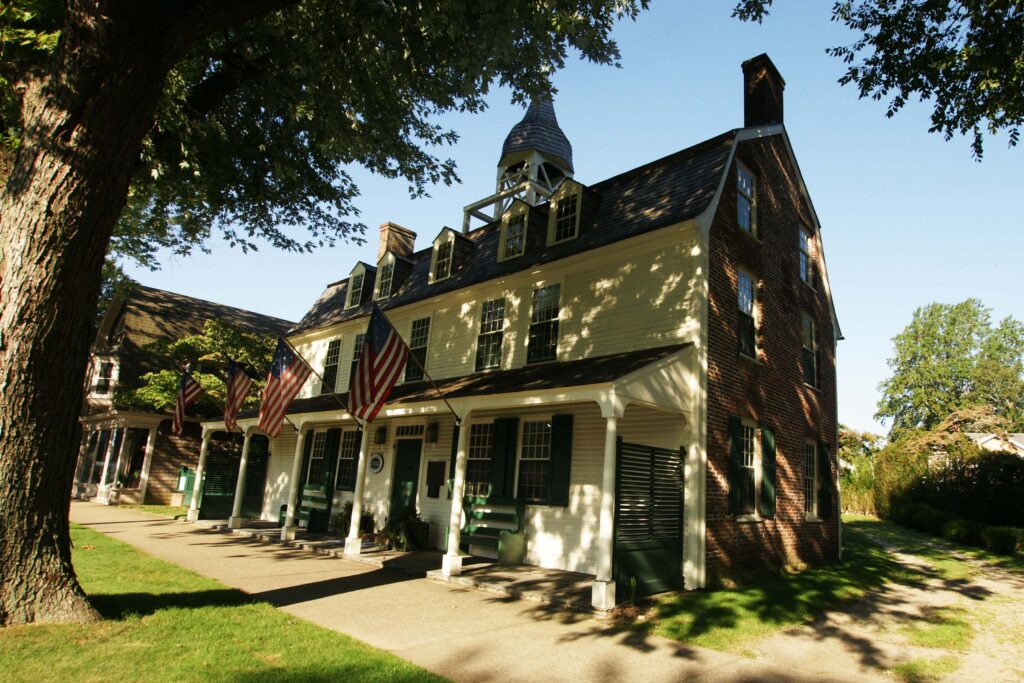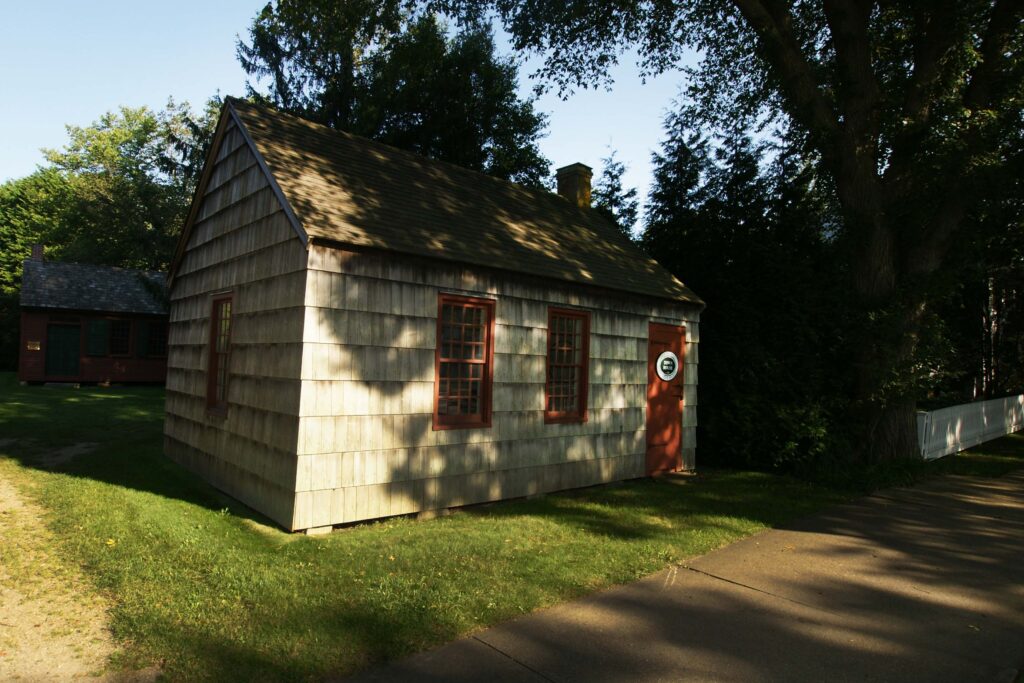
151 Main Street, East Hampton
The opening hours for exhibits at Clinton Academy vary so please check our Event Calendar to plan your visit. To schedule a private visit, please call 631.324.6850, x2. The second floor of the building serves as the offices of the East Hampton Historical Society.
Clinton Academy was one of the first academies in New York State chartered by the Board of Regents. The academy was constructed in 1784 with funds contributed by local citizens at the request of the Rev. Samuel Buell, the pastor of the East Hampton Presbyterian Church.
Named for Governor George Clinton, who contributed the original bell that hung in the cupola, the Academy was a co-educational institution preparing young men for college or for careers in seafaring or surveying. Young women were schooled in etiquette, social graces, and household management. Students came from a broad range of places including Long Island, New York City, New Jersey, and Connecticut as well as from the West Indies.
After the state dissolved the chartered academy system, the building was expanded in 1886 and became known as Clinton Hall. During the late 19th and early 20th centuries, it served at times as a community center, playhouse, town offices, polling station, the original location of Guild Hall and the East Hampton Library, and as offices for the East Hampton Star.
With funding from Mary and Lorenzo E. Woodhouse, Clinton Hall was restored to its late-Georgian style appearance in 1921 and became the home of the East Hampton Historical Society.
Visitors can also enjoy the Mimi Meehan Native Plant Garden behind the Academy, a project of the Garden Club of East Hampton. The garden is accessible during daylight hours via the gate located to the left of the Academy’s porch.
Town House, ca. 1785

147 Main Street, East Hampton
The Town House is open to the public during the Historical Society’s “Main Street Walking Tours,” which are scheduled May through November.
Unique among Long Island buildings, the Town House is the only existing town government meeting place to survive from the Colonial period on Long Island.
The Town Trustees who met there determined the affairs of the township by collecting taxes, passing local laws, administering public lands, maintaining the church and schoolhouse, and hiring the minister and teacher.
The Town House is the earliest surviving one-room schoolhouse on Long Island. Studies were very basic: reading, writing, and enough arithmetic to keep an accounts book. Teachers rarely had a very extensive education and there were virtually no textbooks or paper to use; learning was accomplished by copying on slate.
After 1845, the building continued to be used as a meeting place for the Town Trustees. It was later used as a barbershop, an interior decorator’s studio, and the town welfare headquarters during the Depression. In 1958, the East Hampton Historical Society acquired and moved the Town House to a lot adjacent to the Clinton Academy.
Hook Schoolhouse, ca. 1784

147 Main Street, East Hampton (behind the Town House).
Interpreted as part of the Historical Society’s school programming, this beautiful tiny Georgian designed frame building has been moved about East Hampton Village since it was built almost two and a quarter centuries ago. Found several years ago on North Main Street, this building may have been a school, private library, or lawyer’s office. Quite elegant in detail and proportion, it was saved from destruction and situated behind the Town House. It has been restored to reflect mid-18th-century hornbook schooling as well as an unusual desk arrangement that is described in our early town records.
